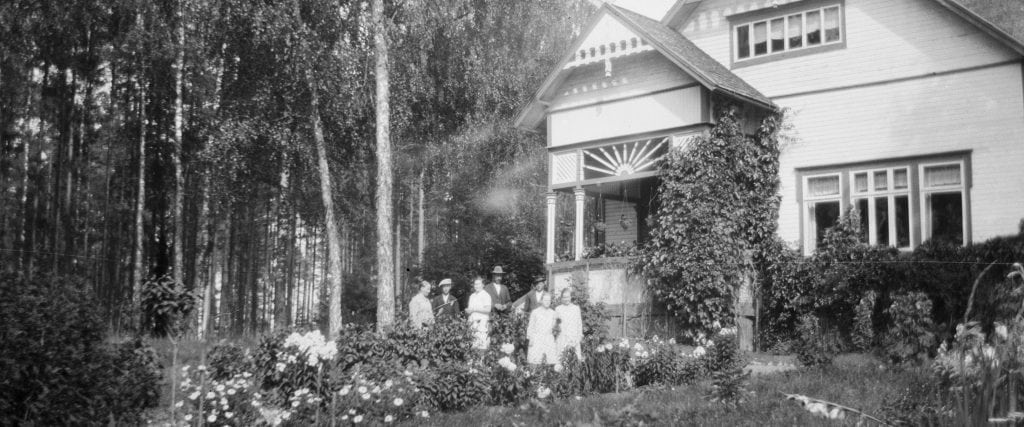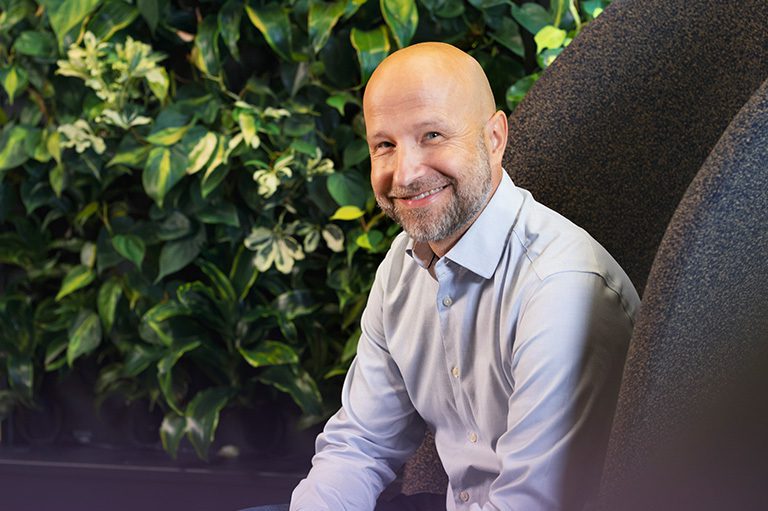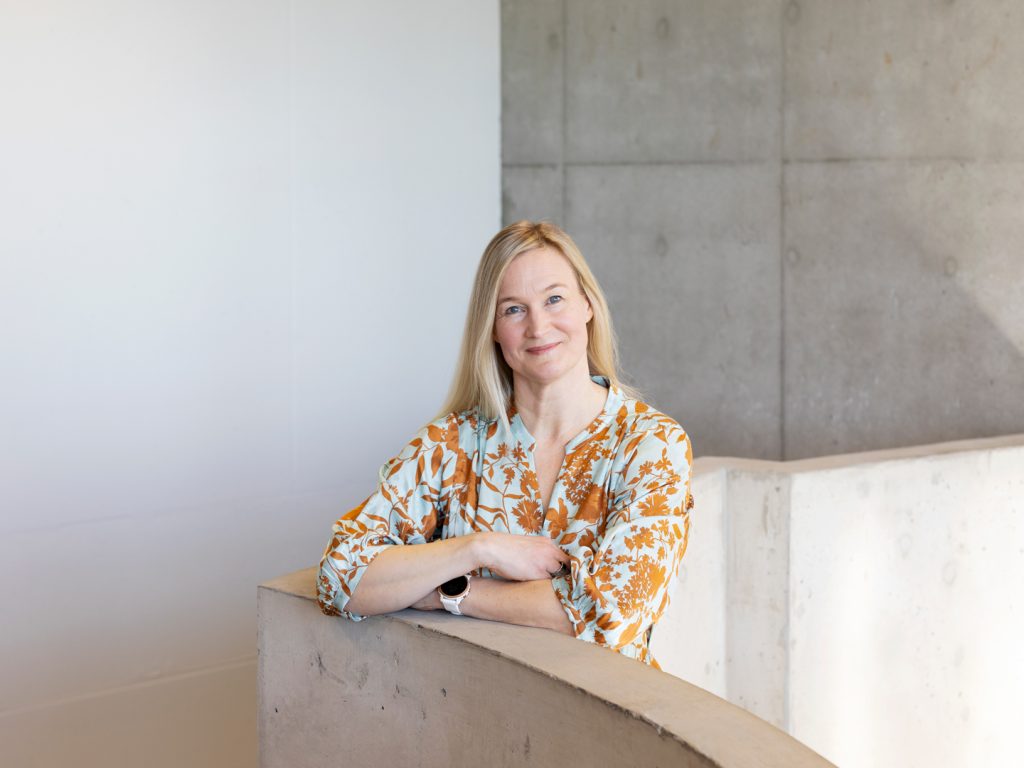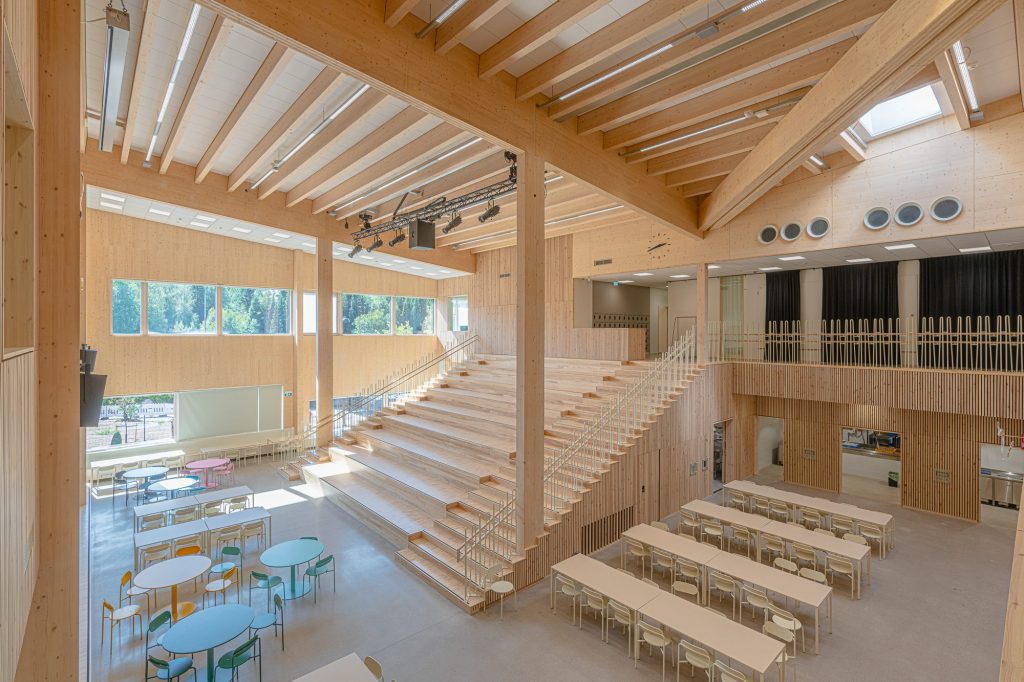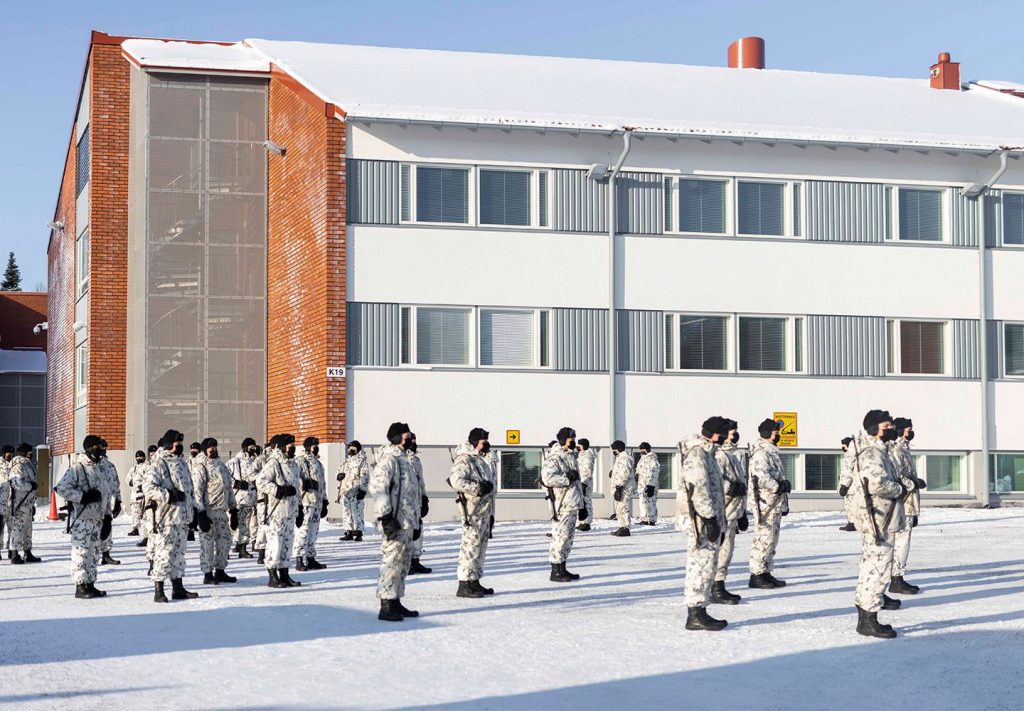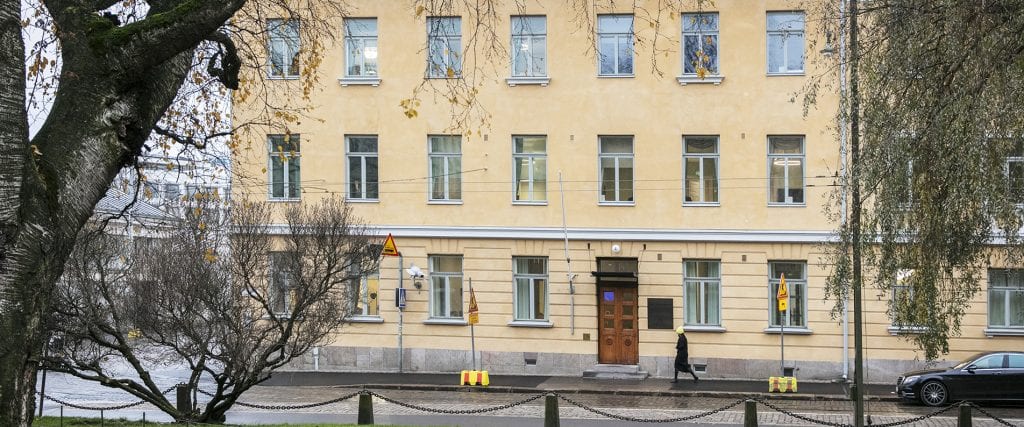A lace bedspread is pulled up meticulously over the bed in the bedroom. A pile of objects covers the desk in the study: books, rifle-cleaning equipment and a jar of worming tablets for the dog, complete with the notes from the pharmacy.
The master and mistress of the house are nowhere to be seen in any of the rooms, apart from in portraits on the wall. Perhaps Ellen is engaged in her favourite hobby in the garden that leads down to the lake and Ukko-Pekka is in the nearby forest practising his shooting.
This is what visitors to Kotkaniemi can imagine while walking from room to room in the museum of the home of Pehr Evind Svinhufvud, or Ukko-Pekka, and his wife Ellen. Svinhufvud was President of the Republic of Finland from 1931 to 1937.
“Many visitors say that this house speaks to them. The objects breathe the 1920–30s,” says project manager Heini Kähkönen from the Kotkaniemi foundation.
The presidential couple’s original furniture and possessions have been set out in the rooms just as they were in old photos – just as if the household had just popped out for a moment.
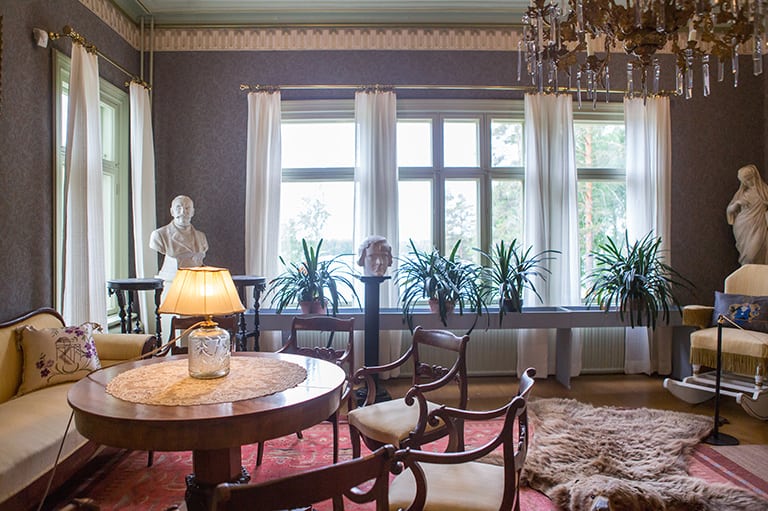
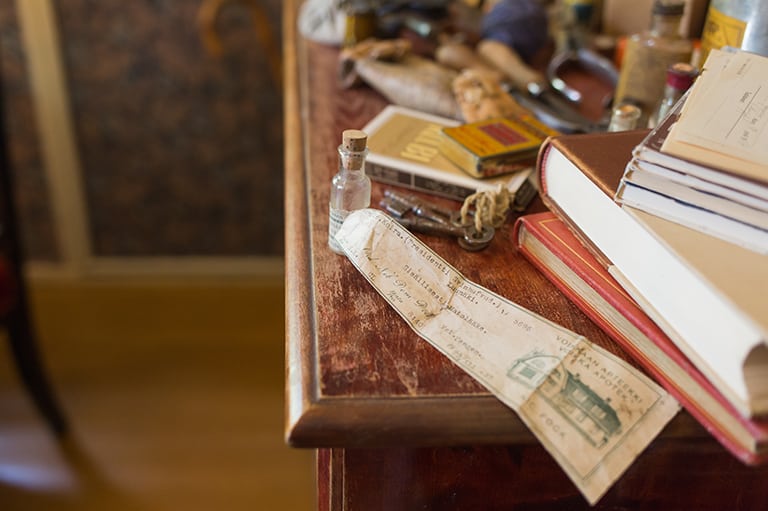
In the main room your attention is drawn to three bearskins – Svinhufvud’s souvenirs from his time in exile in Siberia. The rocking chair is one of the oldest items in the house, dating back to the 1700s or 1800s (picture above).
The rooms in the museum are decorated with original furniture and objects. The president’s dog’s worming tablets from Voikaa pharmacy (picture below).
A souvenir bear from Svinhufvud’s exile in Siberia
A bear’s head adorns the floor of the main hall in Kotkaniemi. The bearskin is P.E. Svinhufvud’s souvenir from Siberia, where he was exiled between 1914 and 1917. After this the lawyer, who opposed the oppression and defended independence, became the country’s first regent, or Chairman of the Senate, and in 1931 he was elected President.
As you can see, Svinhufvud’s life was full of twists, and Kotkaniemi has also experienced stormy times. Four generations of the Svinhufvud family lived in the house until the Finnish Heritage Agency acquired it and kept it as a museum over the years 2000–2012.
“When the Finnish Heritage Agency closed the museum, a group of volunteers took over and kept it open. We didn’t want this place, here in the middle of the forest, to be forgotten about,” says Hilkka Suoanttila, chair of the Kotkaniemi foundation that was established in 2013.
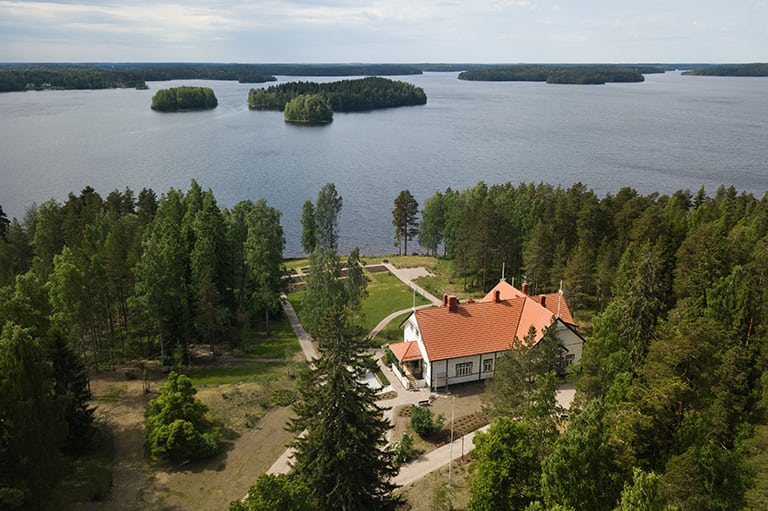
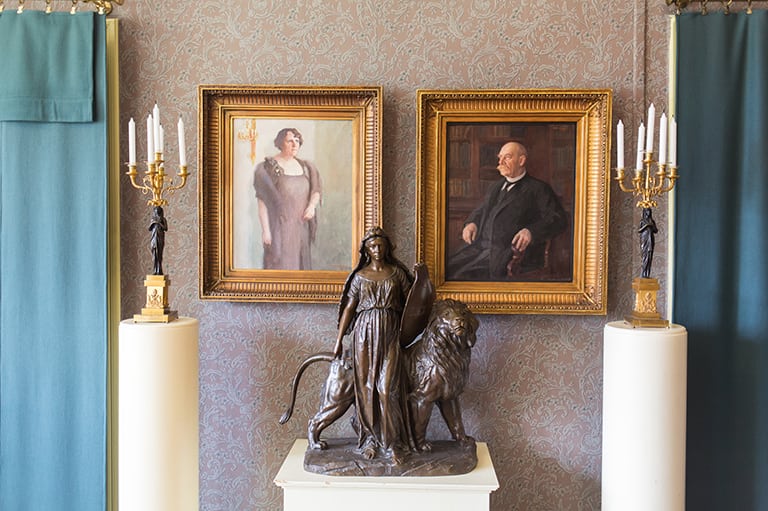
Svinhufvud purchased Kotkaniemi in 1908, and Luumäki was the family’s base while Ukko-Pekka was engaged in his state duties. Now Kotkaniemi is owned by the state, i.e. Senate Properties. The Finnish Heritage Agency is here as a tenant and the Kotkaniemi foundation is in charge of museum operations (picture above).
The presidential couple’s portraits from 1937 were painted by Wilho Sjöström. It is said that Ellen Svinhufvud paid the price of 12 cows for these candlesticks. This bronze Lex figure was a gift from friends in 1928 (picture below).
Renovation work was like detective work
In 2014 Kotkaniemi transferred to the ownership of Senate Properties in accordance with the government property strategy. The house had also faced the threat of being sold, but in the end the tireless work of Kotkaniemi’s advocates produced results. To secure the future of the museum and develop operations, a project to ensure the success of Kotkaniemi was set up in 2017 by the Kotkaniemi foundation, and Heini Kähkönen now manages this project. The project applied for and received funding from the European Agricultural Fund for Rural Development.
The efforts of the Kotkaniemi foundation and other local forces also received a boost from the centenary of Finnish Independence.
“It prompted wider attention that Finland’s first Head of State, President and among other things, Attorney General, and the speaker of the Parliament of Finland for many years needed a museum. Svinhufvud is one of the notable people in Finland’s political and national history. And museums have been established for less important reasons,” says Suoanttila.


The wallpaper patterns are also works of art. The above picture shows P.E. Svinhufvud’s study. Above the door is a plaster copy of the aristocratic family’s coat of arms that was donated in the 1930s. The picture below shows a bedroom and on the bed is a bedspread crocheted by Ellen herself. The pink toilet set on the table was created at a porcelain painting group.
The government offered over EUR 2 million in renovation funds and the renovation of Kotkaniemi started in 2016. During the work the renovators were immersed in decades gone by.
“The renovation was like detective work because as we studied the walls we discovered all the different surfaces that had been in the house over the decades. There were seven to nine layers of wallpaper in each room and it was amazing to discover that the new wallpaper was always glued over the previous layer,” says Selja Flink, Construction Project Manager from Senate Properties.
In four rooms Senate decided to commission new wallpaper according to the original patterns. The floor surface patterns were also retained in the old styles. Concerning the constructional details, Flink was most surprised by the multi-coloured doors.
“One room had a green door and another had a red one. One door had three colours on one side and three colours on the other. I was delighted by every wonderful discovery.”

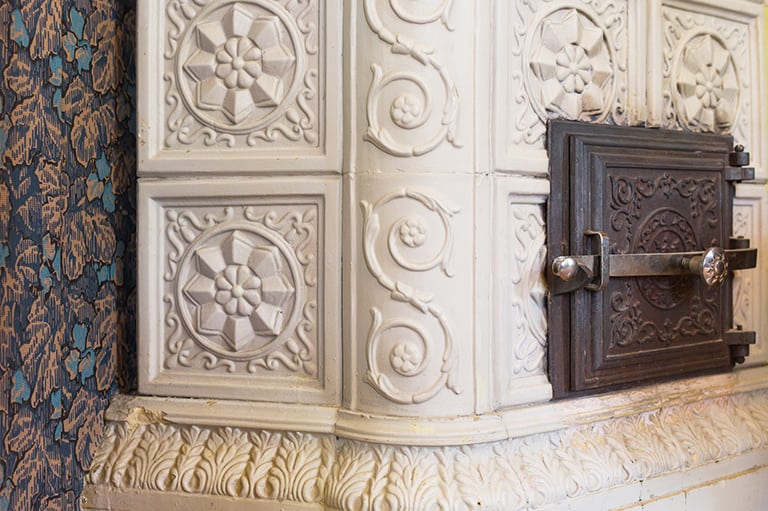
Kotkaniemi now has a cafe. There is also building in the grounds where handicrafters can sell their wares, for example. The Kotkaniemi foundation would still like a jetty on the shore of the lake so boaters can also stop by for a visit (picture above).
The tile stoves are from the famous Rakkolanjoki ceramics factory in Vyborg, for example (picture below).
New: cafe and meeting facilities
Flink, who was in charge of the Kotkaniemi project, is happy and relieved with the results. She had already been acquainted with the place when she worked for the Finnish Heritage Agency; she now works for Senate and the Kotkaniemi case turned up on her desk again in 2014.
“Truthfully speaking I, and many others, thought that we don’t need a museum for every single home of every single president, but that gives away my ignorance of Finnish history. Svinhufvud played a significant role in Finland gaining independence. He really deserves this museum.”
And when they started the renovation, they decided to do it to their best abilities, according to Flink. Fortunately the structure of the building was in good condition.
“I wouldn’t have believed it to begin with but even the foundations were bone dry and in excellent condition. There was only one piece of damp under the bathroom built in the 1930s.”
Kotkaniemi now has a cafe downstairs, which focuses on Finnish ingredients and local produce. The meat in the lamb pie is from Rapattila in nearby Lappeenranta and the blueberry pie contains the Finnish delicacy talkkuna, which is a mixture of roasted barley, rye, oat and pea flour. Upstairs there are two meeting rooms that can be booked by external parties.
“I was adamant that there would also be a cafe, as a place like this won’t survive without a proper cafe. Finns are known for their love of coffee and there is no point visiting a place if you can’t get a cup of coffee,” says Flink.
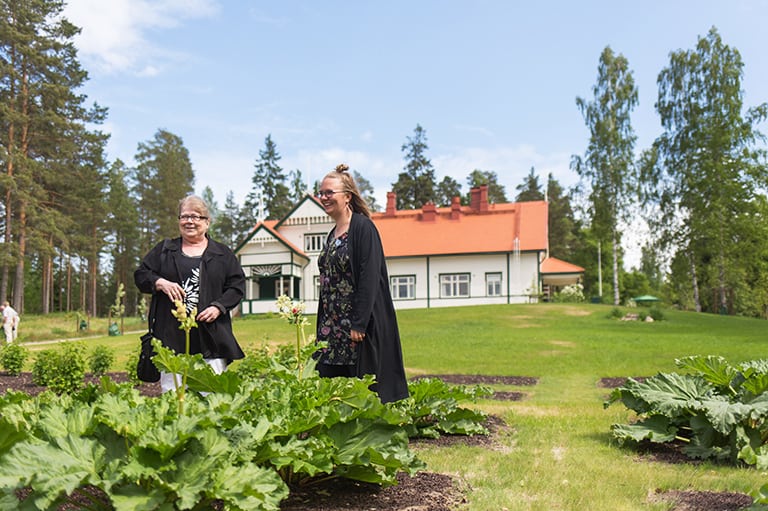
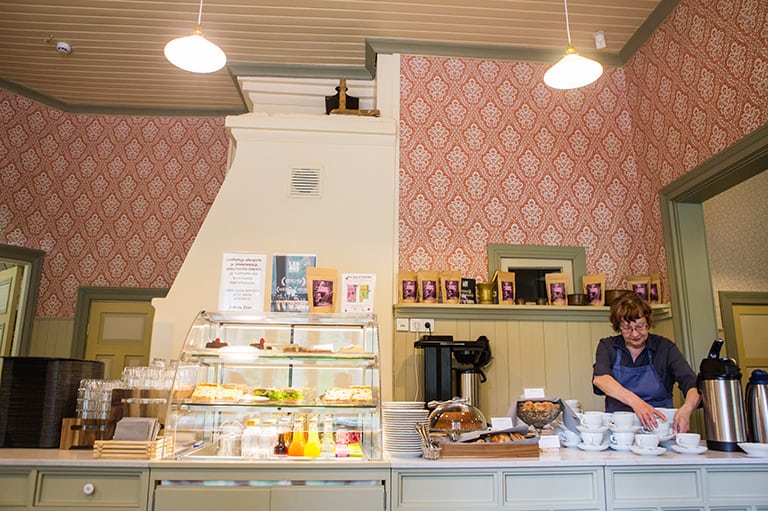
Chair of the Kotkaniemi foundation Hilkka Suoanttila (left) and project manager Heini Kähkönen explain that visitors are enchanted in particular by the garden which now has a new look (picture above)
The inspiration for the delicacies served at Kotkaniemi’s Cafe Ellen, which seats 36, is straight from Ellen Svinhufvud’s recipe book. The local business Satun Makiat runs the cafe with one employee Leena Joronen (picture below).
Over 200 professionals at work
The renovation of Kotkaniemi cost EUR 2.5 million and employed construction and restoration professionals particularly in South-East Finland.
“In all over 200 people, though some of them for only a short while, ended up working on this rather small renovation site.” Selja Flink believes the museum is worth every euro invested in it.
“The sum of money may feel huge to an individual, but when you consider all 12 rooms and the garden, the amount does not seem that big after all,” says Flink. Hilkka Suoanttila and Heini Kähkönen from the Kotkaniemi foundation picked the garden as their favourite. The hillside garden was overgrown and had been overtaken by lupins. Now the beautiful and detailed garden offers an amazing view of Lake Kivijärvi.
“The garden was very close to Ellen’s heart. Now it is the crowd-puller,” says Suonanttila.
According to Kähkönen, local people have been given plots in the kitchen garden, so they can grow things. They don’t need to pay any rent but they do have to keep their plot in good condition.
“The Martha Organisation’s Toikkala club and three private individuals already have their own plots.”
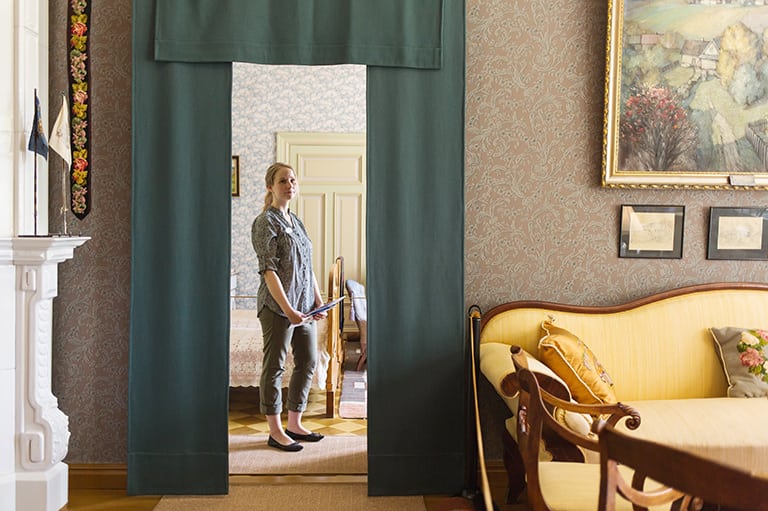

Project manager Sinikka Myyrä says Kotkaniemi exudes the down-to-earth and warm nature of the Svinhufvuds (picture above).
The descendants of the family had donated the presidential couple’s possessions to the municipality of Luumäki, but now the objects have been returned to Kotkaniemi from the local museum. The museum also has portraits from the National Museum of Finland (picture below).
Warm and sturdy presidential couple
Kotkaniemi was opened on 19 May 2018 and well over 1,000 people had already visited over the first ten days. According to Kähkönen, news of the new museum had already spread well over the media and through the grapevine, but she and Suoanttila are disappointed by the lack of signage.
“We still haven’t received permission from the ELY Centre to put up road signs on Route 6 despite two applications. We can’t understand this as in addition to local and regional significance, Kotkaniemi has national interest,” says Suoanttila.
Finland’s third president lived at Kotkaniemi with his family until he died in 1944. Among other things, while Ukko-Pekka was in exile in Siberia, Ellen ran a guest house in the upstairs rooms.
Project designer Sinikka Myyrä, who built the museum’s exhibitions, explains that Kotkaniemi exudes the warmth and sturdy nature of the Svinhufvuds.
“They had an aristocratic background, but they were very down-to-earth people.”
Senate’s Flink encourages visitors to come to Kotkaniemi to experience the atmosphere of a world of the past.
“It is a good way of gaining a sense of proportion: life was very different one hundred years ago – Finland was in the grips of civil war. Now we are a prosperous country and when it comes down to it, we all have pretty similar views on things.”
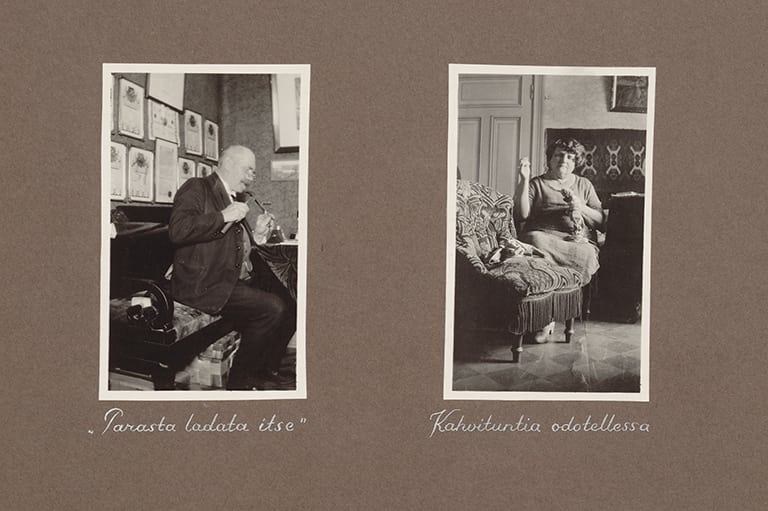
In the photo on the left from 1929, Pehr Evind Svinhufvud is making ammunition on his mahogany desk. He was known for being a good shot and he practised regularly on the shooting range that he built at Kotkaniemi. On the right in the photo from 1928, Ellen Svinhufvud is sewing in the bedroom with daisy-patterned wallpaper. (Both photos taken by Erkki Räikkönen / from the private archive of Sirkka and Jorma Svinhufvud.)
The article’s first main black and white photo: Thanks to Ellen Svinhufvud’s hard work the garden had started to flourish. The sunny hillside leading down to Lake Kivijärvi was also perfect for growing vegetables and berries. (Photo Erkki Räikkönen / Finnish Heritage Agency.)

